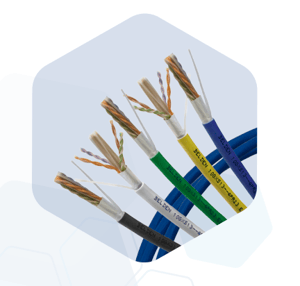 When you make a sizable investment in something, you expect it to perform according to your expectations. When it fails, you have to wonder - is the product broken, or did you not use it properly? When you make that kind of investment in category cable, it's the same situation. If a cable cannot fulfill its promised 100m channel reached, you could face delayed or derailed projects, increased costs, unplanned downtime and hours of troubleshooting.
When you make a sizable investment in something, you expect it to perform according to your expectations. When it fails, you have to wonder - is the product broken, or did you not use it properly? When you make that kind of investment in category cable, it's the same situation. If a cable cannot fulfill its promised 100m channel reached, you could face delayed or derailed projects, increased costs, unplanned downtime and hours of troubleshooting.
Sometimes, high cable temperatures can cause this kind of underperformance. Cables are rated to transmit data over a certain distance up to a certain temperature, and if a cable heats up beyond that point, resistance and insertion loss increase.
So, what factors can cause cable temperatures to rise?
- Cables installed above operational network equipment
- Power being transmitted through bundled cabling
- Uncontrolled ambient temperatures
- Using the wrong category for the job
- Routing of cables near sources of heat
When it comes to Power over Ethernet (PoE) cables, as power levels increase, so does the current level and the amount of heat running through the cable. PoE is becoming increasingly popular with the advent of digital buildings and IoT, so this is definitely something to consider as well. As temperatures rise, so does cable insertion loss.
Of course, to avoid these issues, you need a cable designed to fulfill its promises under higher temperatures. The Belden 10GXS has a smaller diameter to save space in cable trays, and with EquiBlock™ Barrier Technology, it achieves uniform heat-flow dissipation while maintaining insertion loss performance, even up to distances of 100m. And it's in stock in multiple colors with Accu-Tech, so check with your local branch for details.


.png?width=58&height=58&name=X_logo_2023_(white).png)
